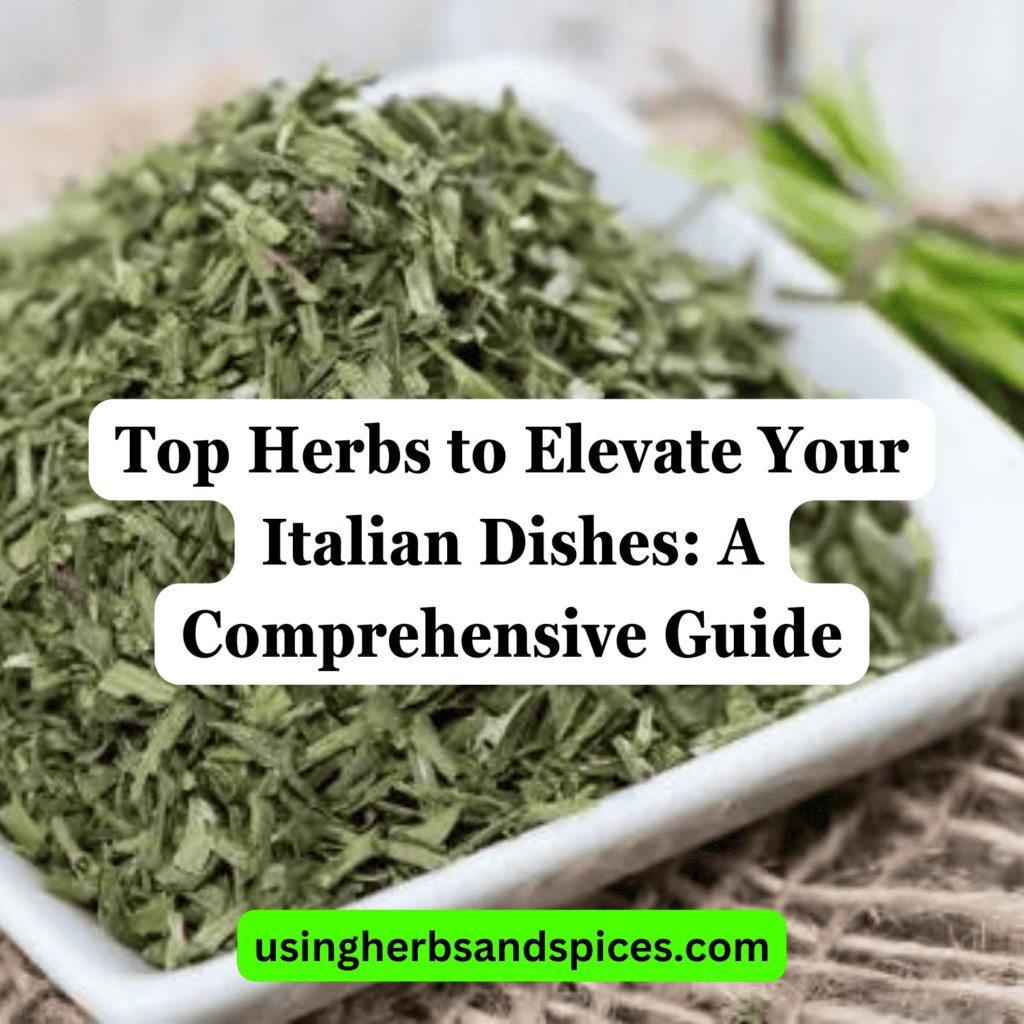SUMMARY: This article presents the major role of basil, oregano, rosemary, and parsley in Italian cuisine. By understanding how to correctly incorporate these herbs, the taste of your Italian dishes can be greatly elevated.

Ever wonder why your homemade Italian dishes lack that authentic, ‘just from Italy’ taste?
The secret could be simpler than you think: the herbs you’re using.
Continue reading to get to know each of these herbs and how they can elevate your cooking from good to ‘mamma mia’ extraordinary.
Table of Contents
Basil: The King of Herbs
When it comes to Italian cooking, Basil reigns supreme. It’s a vital ingredient in dishes like pesto and tomato-basil bruschetta, but its uses go far beyond these classics. By understanding the flavor profile and strength of basil, you can use it to bring a fresh, aromatic touch to a variety of Italian recipes.
Basil’s distinct flavor is most potent when fresh, although dried basil can be a useful substitute in a pinch. Remember that the flavor of basil can fade quickly when cooked, so for best results, add it towards the end of your cooking process. Experimenting with basil in your kitchen can truly elevate your meals – and let’s not forget the refreshing aroma it brings to your kitchen!
Herb 3: Oregano
While many herbs have a role in Italian cuisine, Oregano stands unique with its pungent and spicy flavor aiding in crafting an authentic Italian taste. Originating from the Mediterranean, this versatile herb is a quintessential part of Italian culinary culture, particularly in Southern Italy. You will come across this herb in almost every tomato sauce, grilled vegetables, and of course, the world-famous Margherita pizza.
But how can you elevate your dishes with Oregano? Firstly, understand the power of this herb. The strong flavor of Oregano can overpower other ingredients, so it’s crucial to use restraint when adding it to dishes. Add it towards the end of the cooking process to retain its aroma. Also, pairing it with olive oil can help in intensifying its flavor. Alternatively, consider using it as a garnish on finished dishes for releasing a burst of aromatic and flavorful Oregano.
Apart from the culinary illustration of Oregano, it’s worthwhile to note its beneficial aspects. This humble herb is packed with antioxidants and nutrients like Vitamin K. Its properties have also been linked with improved digestive health and combatting bacteria. However, the focus doesn’t shift from the fact that incorporating Oregano into your Italian cooking, will surely elevate the flavor, texture, and aroma of your dishes.
Herb 4: Rosemary
Rosemary, known scientifically as Rosmarinus officinalis, is another essential herb in the Italian culinary repertoire. Originating from the Mediterranean region, rosemary carries a distinctive aroma – a mixture of pine and lemon – that has helped it become a beloved addition to the global culinary scene.
In Italian cuisine, rosemary is often used to create savory depth in dishes such as roast lamb, chicken, and certain fish like cod. Its needle-like leaves, when used freshly cut, bring a deep, aromatic flavor to slow-cooked dishes. The robust flavor profile of rosemary stands up well to high-heat cooking methods, such as grilling or roasting, transforming meat and vegetable dishes alike into flavor-intensive meals.
To elevate the flavors of your dishes using rosemary, it is best to incorporate it during the cooking process so that the heat can really help the herb release its flavors. Adding finely chopped rosemary to doughs for pasta or bread lets the flavor permeate through the dish. Remember that less is more with rosemary, as it is quite potent and, if overused, can overshadow other flavors.
Herb 5: Parsley
Parsley, bearing the scientific name Petroselinum crispum, is another important herb in Italian cuisine. This leafy herb, used for its vibrant, fresh flavor and as garnish, traces its origin back to the Mediterranean region, just like many other popular cooking herbs.
In the realm of Italian gastronomy, parsley plays a significant role. In particular, flat-leaf parsley, the variety commonly favored in Italy, is valued for its robust flavor in comparison with its curly-leaf cousin. It finds its way into a plethora of dishes, including soups, sauces, salads, and fish dishes, among others. Its lively, slightly bitter flavor can brighten and balance the flavors of a dish.
One way to optimally use parsley for elevating the flavors in your Italian dishes is to add it in at the end of the cooking process or use it as a garnish. This allows the herb to maintain its fresh, green, and vibrant qualities. Be generous in its use; unlike many other herbs, it’s difficult to overdo it with parsley. Chopping it finely can really help to release the flavor, but remember to wash it thoroughly before use to remove any residual dirt.
Top Herbs to Elevate Your Italian Dishes
In this article, we delved into unlocking the potential of four top herbs that can revolutionize your Italian dishes.
- Basil: native to tropical regions from central Africa to Southeast Asia, it is a tender plant used in cuisines worldwide and is crucial for a variety of Italian delicacies.
- Oregano: A staple in Italian kitchens, Oregano is used in a multitude of dishes and has a rich history of not just culinary but also medicinal uses.
- Rosemary: With its unique aroma and flavor, Rosemary can transform any dish, making it a quintessential herb in Italian cooking.
- Parsley: Although often underestimated, Parsley is incredibly versatile and its judicious use can notably elevate the taste of your dish.
In conclusion, these herbs hold the key to authentic Italian flavor and are indispensable for any home cook or professional chef looking to master Italian cooking. So do not hesitate, let your culinary creativity run wild, experiment with these herbs, and taste the magic unfold in your kitchen.
Top Herbs for Italian Cooking FAQs
Why are herbs important in Italian cooking?
Herbs are crucial in Italian cooking as they add depth, create balance and brighten up different dishes. They provide unique flavors and aromatics which help to achieve the authentic and vibrant taste of Italian cuisine.
What are the most common herbs used in Italian cuisine?
The most common herbs used in Italian cuisine include basil, oregano, rosemary, and parsley. These herbs provide a wide-ranging palette of flavors and aromas that can transform dishes from everyday to gourmet.
Can I substitute dried herbs for fresh herbs in Italian cooking?
It is generally possible to substitute dried herbs for fresh ones, but the effect might be slightly different. Dried herbs have a more concentrated flavor, so use them in smaller amounts. However, fresh herbs have brightness and depth that dried herbs lack, so it’s best to use fresh ones when possible.
How to store fresh herbs for Italian cooking?
To store fresh herbs, wash and dry them thoroughly first. Then, for herbs like basil and parsley, trim the stems and place them in a glass of water, similar to a bouquet of flowers, then cover loosely with a plastic bag and refrigerate. Bushy herbs like rosemary and oregano can be loosely wrapped in a damp paper towel and refrigerated in a resealable plastic bag.
How much of each herb should I use in a dish?
The amount of each herb to use will depend on the specific recipe as well as your personal taste. As a general rule, because of their strong flavors, less is more when it comes to herbs like oregano and rosemary, whereas you can be more generous with basil and parsley. Experimenting can help you find the balance that best suits your preferences.
